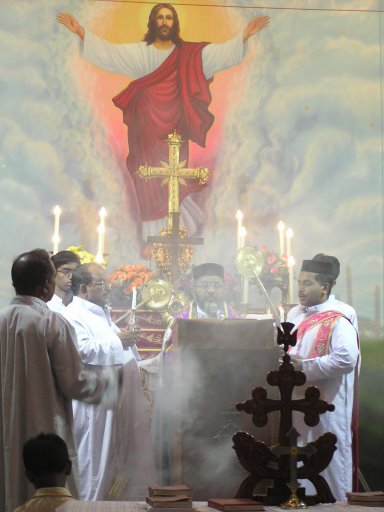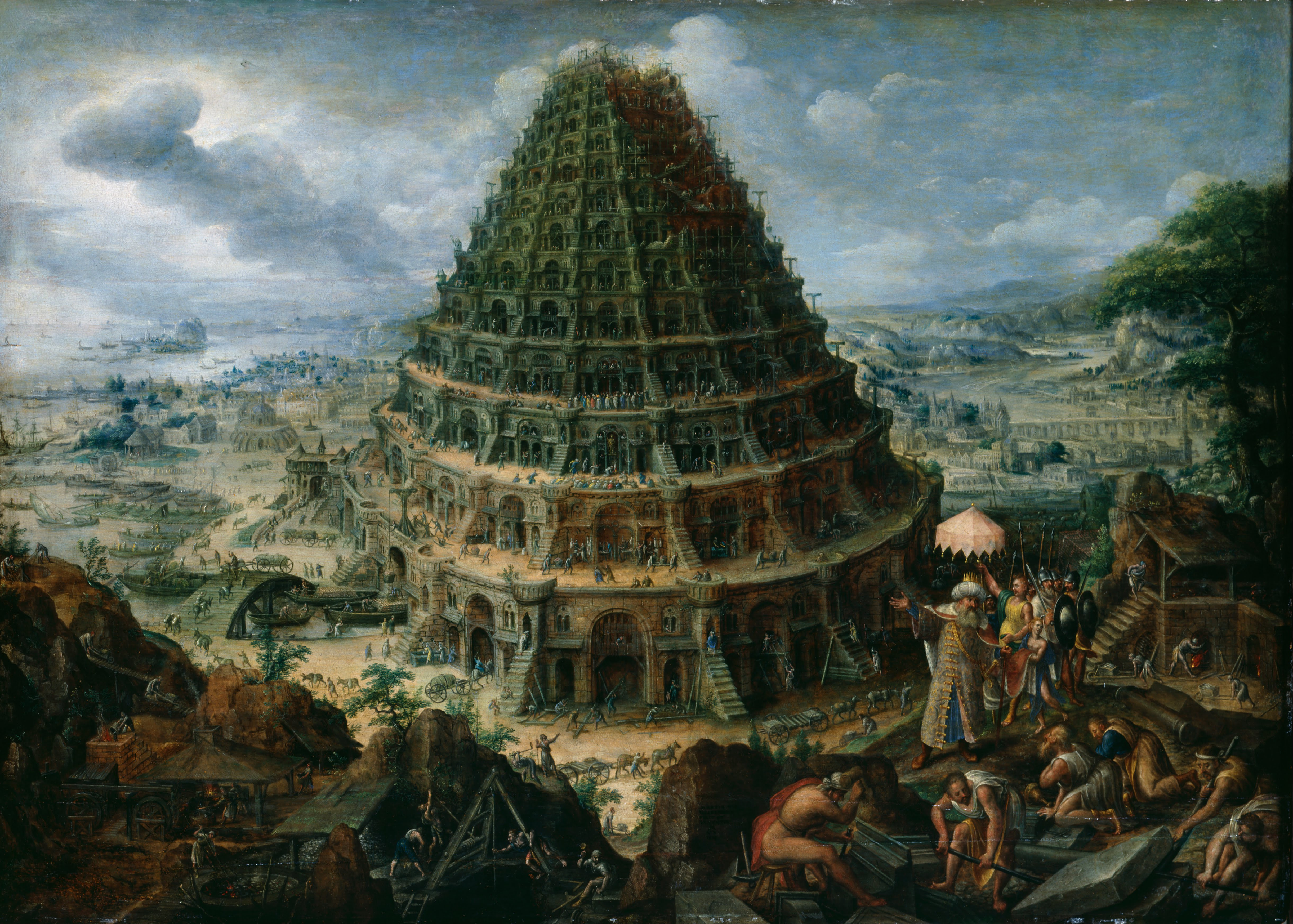|
Gillis Coignet
Gillis Coignet, Congnet or Quiniet (c. 1542 – 1599) was a Dutch and Flemish Renaissance painting, Flemish Renaissance painter, who was strongly influenced by the Italian style. He painted historical and mythological subjects of an easel size, but was more successful in landscapes, in candlelight subjects, and moonlight.Gillis Coignet (I) at the Netherlands Institute for Art History He was a Lutheran, which probably influenced his moves from Antwerp to Amsterdam and then Hamburg. He spent most of the 1560s in Italy.Barbara Uppenkamp, ''Gilles Coignet. A migrant painter from Antwerp and his Hamburg career'' in:� ... [...More Info...] [...Related Items...] OR: [Wikipedia] [Google] [Baidu] |
St John The Evangelist At Patmos (Tobias Verhaecht)
''St John the Evangelist at Patmos'' is an oil-on-panel painting by Flemish people, Flemish painters Tobias Verhaecht and Gillis Coignet. The painting was completed in 1598, and is now in the Hermitage Museum in Saint Petersburg. Painting According to legend, John the Apostle, Saint John was exiled to Patmos during the persecutions under Emperor Domitian. There, he is thought to have written the Book of Revelation, although some attribute the authorship of Revelation to another man, called John the Presbyter, or to other writers of the late first century AD. In the painting, John is depicted sitting on a rock by the sea, in the process of writing the Book of Revelation. Next to him there sits an eagle, John's commonest attribute along with a book or scroll. Provenance The painting entered the Hermitage Museum in 1934. It was moved there from the Leningrad branch of the Soviet Writers' Union. The painting was formerly in the collection of P.V. Delarov. References Bibliography [...More Info...] [...Related Items...] OR: [Wikipedia] [Google] [Baidu] |
:en:Fernando Álvarez De Toledo, 3rd Duke Of Alba
Fernando Álvarez de Toledo y Pimentel, 3rd Duke of Alba (29 October 150711 December 1582), known as the Grand Duke of Alba (, pt, Grão Duque de Alba) in Spain and Portugal and as the Iron Duke ( or shortly 'Alva') in the Netherlands, was a Spanish noble, general and diplomat. Alba achieved notoriety for his actions during the Eighty Years' War in the Spanish Netherlands, where his prolonged military campaigns and harsh repression failed to suppress the Dutch Revolt. Born into a prominent Castilian military family, Alba first distinguished himself in the 1535 conquest of Tunis during the Ottoman-Habsburg Wars as part of a long conflict for predominance over the western Mediterranean Sea. He then commanded the Spanish troops at the Battle of Mühlberg (1547), where the army of Holy Roman Emperor Charles V defeated the German Protestant princes in the Schmalkaldic War. Alba was the commander-in-chief of the Spanish-Habsburg army during the Italian War of 1551–1559, and becam ... [...More Info...] [...Related Items...] OR: [Wikipedia] [Google] [Baidu] |
Logroño
Logroño () is the capital of the province of La Rioja, situated in northern Spain. Traversed in its northern part by the Ebro River, Logroño has historically been a place of passage, such as the Camino de Santiago. Its borders were disputed between the Iberian kingdoms of Castille, Navarre and Aragon during the Middle Ages. The population of the city in 2021 was 150,808 while the metropolitan area included nearly 200,000 inhabitants. The city is a centre of trade of Rioja wine, for which the area is noted, and manufacturing of wood, metal and textile products. Etymology Origin of the name The origin of this toponym is, as for many other places, unknown. The name ''Lucronio'' was first used in a document from 965 where García Sánchez I of Pamplona donated the so-called place to the Monastery of San Millán. In the fuero from 1095 it appeared under the name ''Logronio'', except once when it was called ''illo Gronio''. The most broadly accepted theses seem to be thos ... [...More Info...] [...Related Items...] OR: [Wikipedia] [Google] [Baidu] |
Royal Museum Of Fine Arts, Antwerp
The Royal Museum of Fine Arts Antwerp ( Dutch: ''Koninklijk Museum voor Schone Kunsten Antwerpen'', ''KMSKA'') is a museum in Antwerp, Belgium, founded in 1810, that houses a collection of paintings, sculptures and drawings from the fourteenth to the twentieth centuries. This collection is representative of the artistic production and the taste of art enthusiasts in Antwerp, Belgium and the Northern and Southern Netherlands since the 15th century. The neoclassical building housing the collection is one of the primary landmarks of the Zuid district of Antwerp. The majestic building was designed by Jean-Jacques Winders (1849–1936) and Frans Van Dijk (1853–1939), built beginning in 1884, opened in 1890, and completed in 1894. Sculpture on the building includes two bronze figures of Pheme with horse-drawn chariots by sculptor Thomas Vincotte, and seven rondel medallions of artists that include Boetius à Bolswert, Frans Floris, Jan van Eyck, Peter Paul Rubens, Quentin ... [...More Info...] [...Related Items...] OR: [Wikipedia] [Google] [Baidu] |
:en:Hans Vredeman De Vries
Hans Vredeman de Vries (1527 – c. 1607) was a Dutch Renaissance architect, painter, and engineer. Vredeman de Vries is known for his publication in 1583 on garden design and his books with many examples on ornaments (1565) and perspective (1604). The Vredeman de Vries family included a number of artists and musicians. Biography Born in Leeuwarden and raised in Friesland, in 1546 Vredeman de Vries went to Amsterdam and Kampen. In 1549 he moved to Mechelen where the Superior Court was seating. Sebastian, his brother, was the organist in the local church. Vredeman de Vries designed ornaments for merry parades of Charles V and Philip II. Studying Vitruvius and Sebastiano Serlio, (translated by his teacher Pieter Coecke van Aelst), he became an internationally known specialist in perspective. He continued his career in Antwerp, where he was appointed city architect and fortification engineer. After 1585 he fled the city because of the Spanish occupation by Alessandro Farnese ... [...More Info...] [...Related Items...] OR: [Wikipedia] [Google] [Baidu] |
Gilles Coignet And Georg Flegel - Allegory Of Vanity
The Gilles are the oldest and principal participants in the Carnival of Binche in Belgium. They go out on Shrove Tuesday from 4 am until late hours and dance to traditional songs. Other cities, such as La Louvière and Nivelles, have a tradition of Gilles at carnival, but the Carnival of Binche is by far the most famous. In 2003, the Carnival of Binche was proclaimed one of the Masterpieces of the Oral and Intangible Heritage of Humanity by UNESCO.Logan p.223 Costume Around 1000 Gilles, all male, some as young as three years old, wear the traditional costume of the Gille on Shrove Tuesday. The outfit features a linen suit with red, yellow, and black heraldic designs (the colours of the Belgian flag), trimmed with large white-lace cuffs and collars. The suit is stuffed with straw, giving the Gille a hunched back. Gilles also wear wooden clogs and have bells attached to their belts. In the morning, they wear a wax mask of a particular design. After reaching the town hall, they ... [...More Info...] [...Related Items...] OR: [Wikipedia] [Google] [Baidu] |
:en:Feast Of The Ascension
The Feast of the Ascension of Jesus Christ (also called the Solemnity of the Ascension of Jesus Christ, Ascension Day, Ascension Thursday, or sometimes Holy Thursday) commemorates the Christian belief of the bodily Ascension of Jesus into Heaven. It is one of the ecumenical (shared by multiple denominations) feasts of Christian churches, ranking with the feasts of the Passion and Pentecost. Following the account of that the risen Jesus appeared for 40 days prior to his Ascension, Ascension Day is traditionally celebrated on a Thursday, the fortieth day of Easter, although some Christian denominations have moved the observance to the following Sunday, sometimes called Ascension Sunday. The day of observance varies by ecclesiastical province in many Christian denominations, as with Methodists and Catholics, for example. Ascensiontide refers to the ten-day period between the Feast of the Ascension and the Feast of Pentecost. The Sunday within that period may be referred to as the ... [...More Info...] [...Related Items...] OR: [Wikipedia] [Google] [Baidu] |
Marten Van Valckenborch
Marten van Valckenborch or Marten van Valckenborch the Elder (1535 in Leuven – 1612 in Frankfurt), was a Flemish Renaissance painter, mainly known for his landscapes and city scapes. He also made allegorical paintings and some portraits. After commencing his career in the Spanish Netherlands, he later migrated to Frankfurt in Germany where he and other members of his extended family of artists played an important role in local artistic developments.Alexander Wied and Hans Devisscher. "Valckenborch, van." Grove Art Online. Oxford Art Online. Oxford University Press. Web. 31 August 2020 Life Marten van Valckenborch was born in Leuven in what would become one of the most prominent Flemish families of artists. Spanning three generations, 14 artists are recorded in the family of whom his younger brother Lucas the Elder and his own sons, Frederik van Valckenborch and Gillis van Valckenborch, were the most important personalities.Ulrike Schmidl, ''Lucas van Valckenborch in Wiener S ... [...More Info...] [...Related Items...] OR: [Wikipedia] [Google] [Baidu] |
Gerard De Jode
Gerard de Jode (also known as Petrus de Jode; – 5 February 1591) was a Netherlandish cartographer, engraver, and publisher who lived and worked in Antwerp. In 1547, De Jode was admitted to the Guild of St. Luke, and began his work as a publisher. He frequently printed the works of other cartographers, including Giacomo Gastaldi's world map in 1555, Jacob van Deventer's map of the Duchy of Brabant in 1558, and Ortelius' eight-sheet world map in 1564. Background His most outstanding work is a two volume atlas ''Speculum Orbis Terrarum'' published in 1578. It was aimed at competing with another atlas, ''Theatrum Orbis Terrarum'' by Ortelius, published eight years earlier in 1570. The competing atlas had become so popular by the time he finally published his own atlas however, that his version never sold well, despite his outstanding reputation. Only about a dozen examples have survived. De Jode made plans for another enlarged edition, which was uncompleted at his dea ... [...More Info...] [...Related Items...] OR: [Wikipedia] [Google] [Baidu] |
Gillis Coignet - Allegory Of Christian Life
Gillis may refer to: People *Gillis (surname), list of people with this name *Gillis Wilson, American football player Places ;Belgium *Sint-Gillis (Saint-Gilles, Belgium), municipality *Sint-Gillis-Waas, municipality *Sint-Gillis-bij-Dendermonde, town in the municipality of Dendermonde ;United States *Gillis, California *Gillis, Louisiana *Gillis Bluff Township, Butler County, Missouri *Gillis Range, a mountain range in Nevada Things *Gillis Centre complex of historical buildings in Edinburgh, Scotland *Gillis College a former seminary in Edinburgh, Scotland *''The Many Loves of Dobie Gillis'', a 1951 collection of short stories and a 1959-1963 American TV series *USS Gillis (DD-260), USS ''Gillis'' (DD-260) (1919-1945), a Clemson-class destroyer in the United States Navy *Willie Gillis, a fictional character by Norman Rockwell See also *Gilli (other) *Gillies {{disambiguation, geo ... [...More Info...] [...Related Items...] OR: [Wikipedia] [Google] [Baidu] |
.jpg)

_in_Logroño.jpg)



